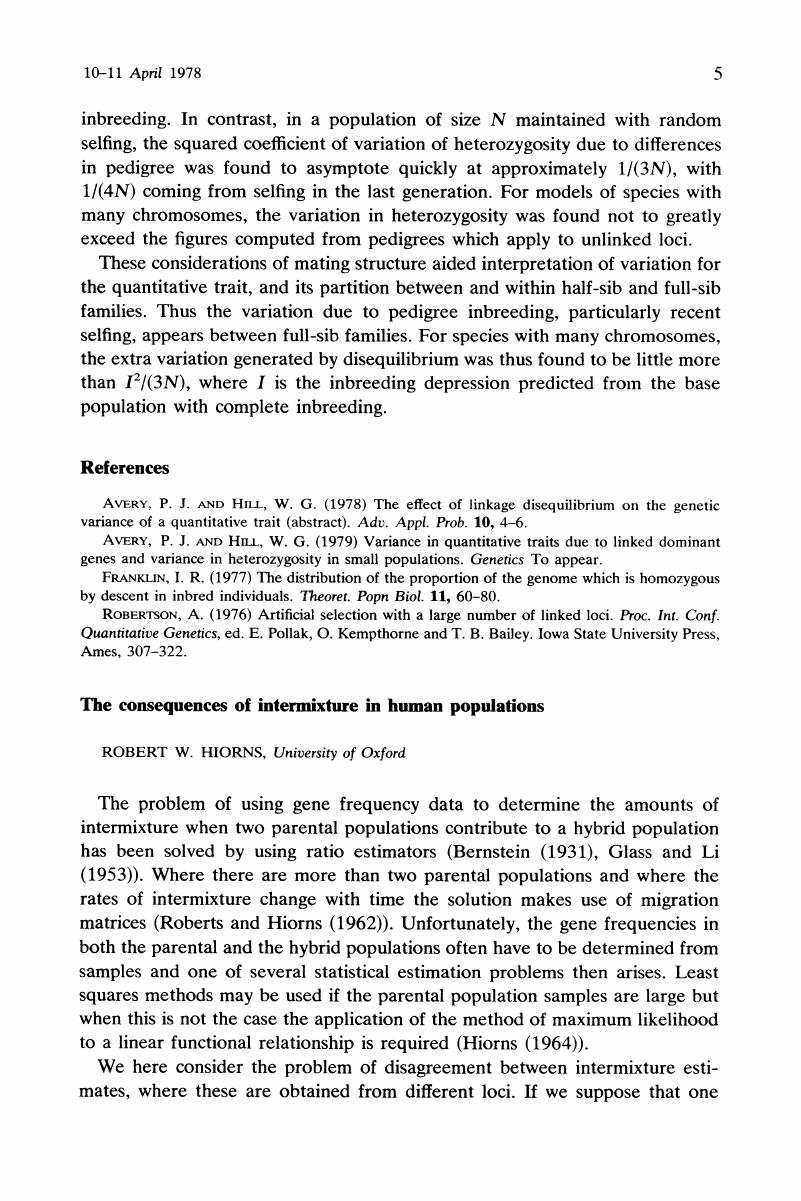No CrossRef data available.
Article contents
The consequences of intermixture in human populations
Published online by Cambridge University Press: 01 July 2016
Abstract
An abstract is not available for this content so a preview has been provided. Please use the Get access link above for information on how to access this content.

- Type
- Symposium on Mathematical Genetics Cambridge, 10–11 April 1978
- Information
- Copyright
- Copyright © Applied Probability Trust 1979
References
Bernstein, F. (1931) Die geographische Verteilung der Blutgruppen und ihre anthropologische Bedeutung. In Comitato Italiano per lo Studio dei Problemi della Populazione.
Instituto Poligrafico dello Stato, Rome.Google Scholar
Elston, R. C. (1971) The estimation of admixture in racial hybrids. Ann. Hum. Genet.
35, 9–17.CrossRefGoogle ScholarPubMed
Glass, B. and Li, C. C. (1953) The dynamics of racial intermixture. Amer. J. Hum. Genet.
5, 1–20.Google ScholarPubMed
Hiorns, R. W. and Harrison, G. A. (1970) Sampling for the detection of natural selection by age group genetic differences. Hum. Biol.
42, 53–64.Google ScholarPubMed
Roberts, D. F. and Hiorns, R. W. (1962) the dynamics of racial intermixture. Amer. J. Hum. Genet.
14, 261–277.Google ScholarPubMed
Thompson, E. A. (1973) The method of minimum evolution. Ann. Hum. Genet.
36, 333–340.CrossRefGoogle ScholarPubMed




